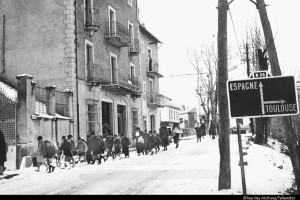Recurut – Routes across the Pyrenees

The ITEM research centre has taken part in a European project aimed at identifying and analysing migratory flows of people and the routes they used on both sides of the Pyrenean frontier between 1930 and 1970.
In 2013, Diego Gaspar and Roberto Ceamanos, history professors at the University of Saragossa, contacted the Identities, Territories, Expressions, Mobility (ITEM) research centre at UPPA. The first project concentrated on combatants from Aragon who chose to join the Free French. Together, the researchers had the idea of reconstituting the memories and the history of those who crossed the frontier, as well as identifying the routes used during the 20th century. The Pyrenees were the crossing point for Spanish refugees during the civil war, the escape route for fallen airmen, allied troops and Jews being pursued during the second world war and the starting point for numerous Spanish economic migrants.
“The project appealed to us straight away”, recalls Laurent Jalabert, lecturer at
The project finished at the end of 2015 and the results are now accessible to all on a dedicated web site. Six routes were finally chosen along the whole of the Pyrenean range. They represent migratory flows linked to the Spanish civil war, contraband and the second world war as well as those related to the economic and political situations in Portugal and Spain.
Each route has a detailed map, enriched with commentaries, eye-witness accounts, photos and videos. The information panels/interactive terminals designed by the ITEM research centre are now in place beside the routes. All you need to do now is put on your boots and go on six beautiful, historical walks!
Contact: Victor Pereira, victor.pereira @ univ-pau.fr


